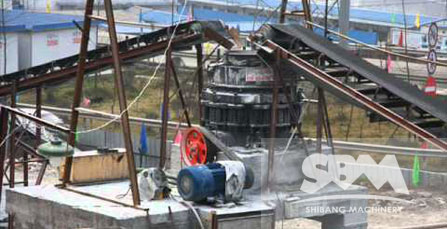
Pozzolana Cement Production Line
Concrete is the world's most utilized construction material. The need for infrastructural development in both the developing and developed countries has placed a great demand on ordinary portland cement (OPC), traditionally, the main binder in the manufacture of concrete. Despite the advantages of concrete as a construction material, Pozzolana Cement Production Line comes at a great cost to the environment.
In view of environmental and sustainability concerns associated with the production of cement, the use of pozzolanas to replace part of portland cement is receiving a lot of attention. Replacing portland clinker either partially or entirely is also being investigated as an alternative to carbon dioxide emissions. Up 70% of portland cement can be replaced by using materials such as primarily fly ash, slag, silica fume, natural pozzolanas, rice-husk ash, wood ash, and agricultural products ash.Artificial pozzolanas used in modern commercial cement are derived from fly ash produced by coal burning plants; incineration of municipal solid waste etc. .Pozzolanic materials do not possess any cementing properties of their own, but they contain silica and alumina in reactive form. Ancient Romans produced exceptional cement by mixing pozzolanic materials with lime to build structures some of which are standing today.
Pozzolanic materials chemically react with calcium hydroxide in the presence of water to form compounds possessing cementitious properties. The pozzolanic reactions are silica reactions in the presence of calcium hydroxide and water to produce calcium silicate hydrates(C-S-H). C-S-H creates a denser microstructure that increases strength, reduces the permeability of concrete and improves its resistance to chemical attack. The partial replacement of ordinary portland cement by pozzolanas are known to improve the resistance of concrete to sulphates.As additives in modern cements pozzolanas improve mechanical strength and provide resistance to physical and chemical weathering. The addition of pozzolanas reduces pore sizes and porosity leading to increased strength. The aim of the study is to investigate experimentally the effects of partial replacement of OPC with pozzolana on the workability and compressive strength of concrete. This study seeks to contribute to efforts to make use of locally available materials in infrastructural development in line with the Ghana Government's objective of using at least 40% of local building materials in government infrastructural projects.
